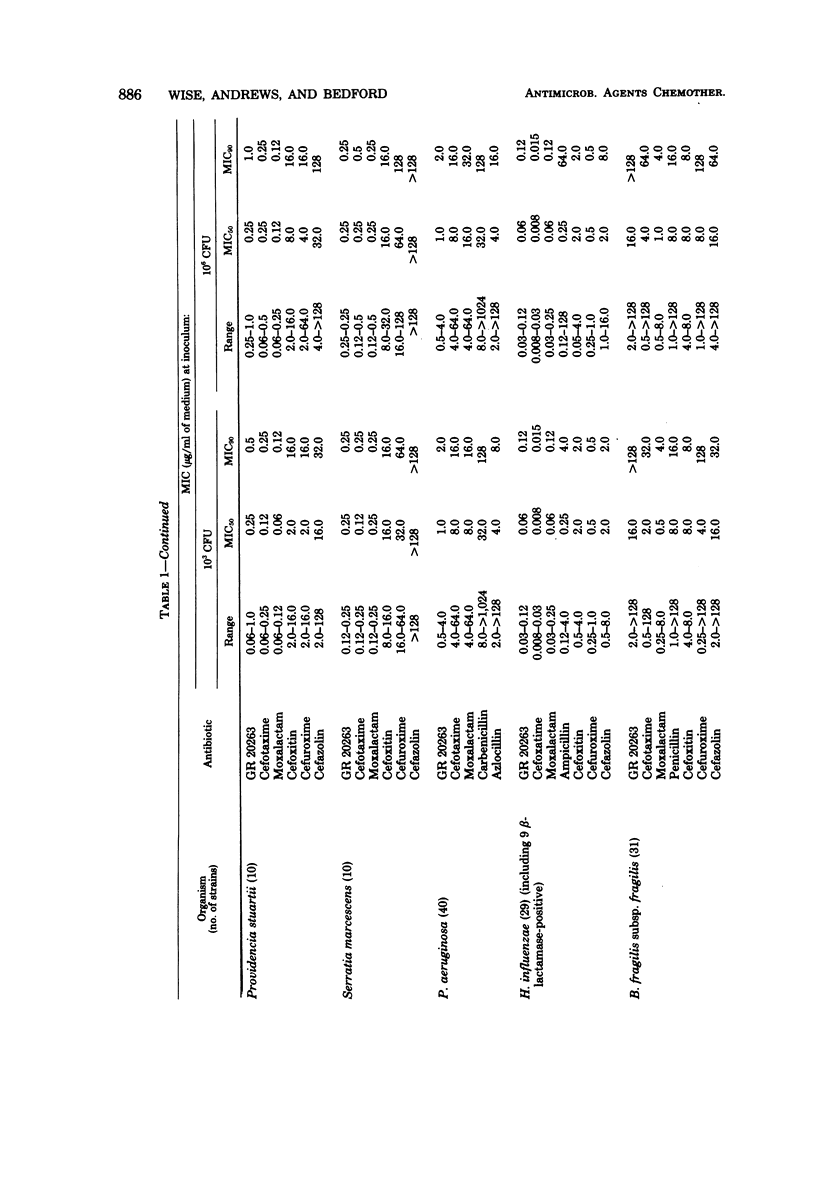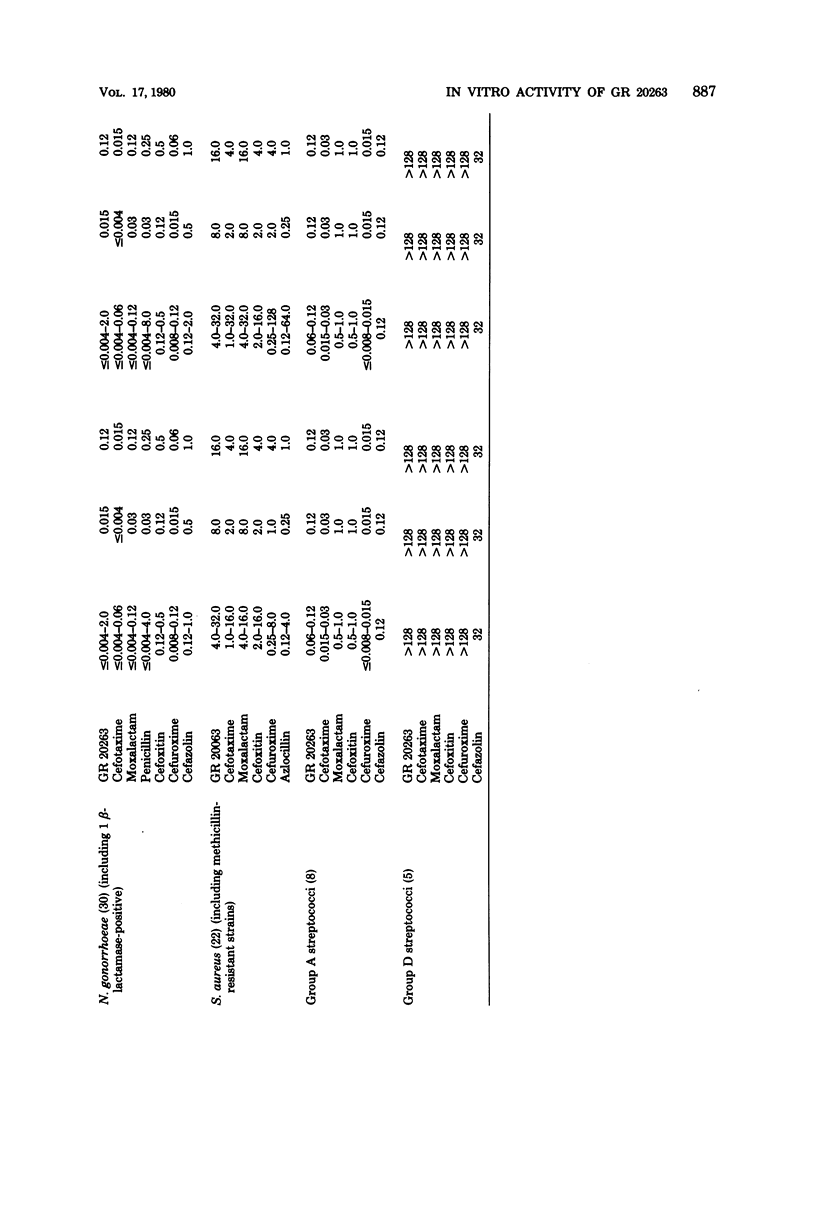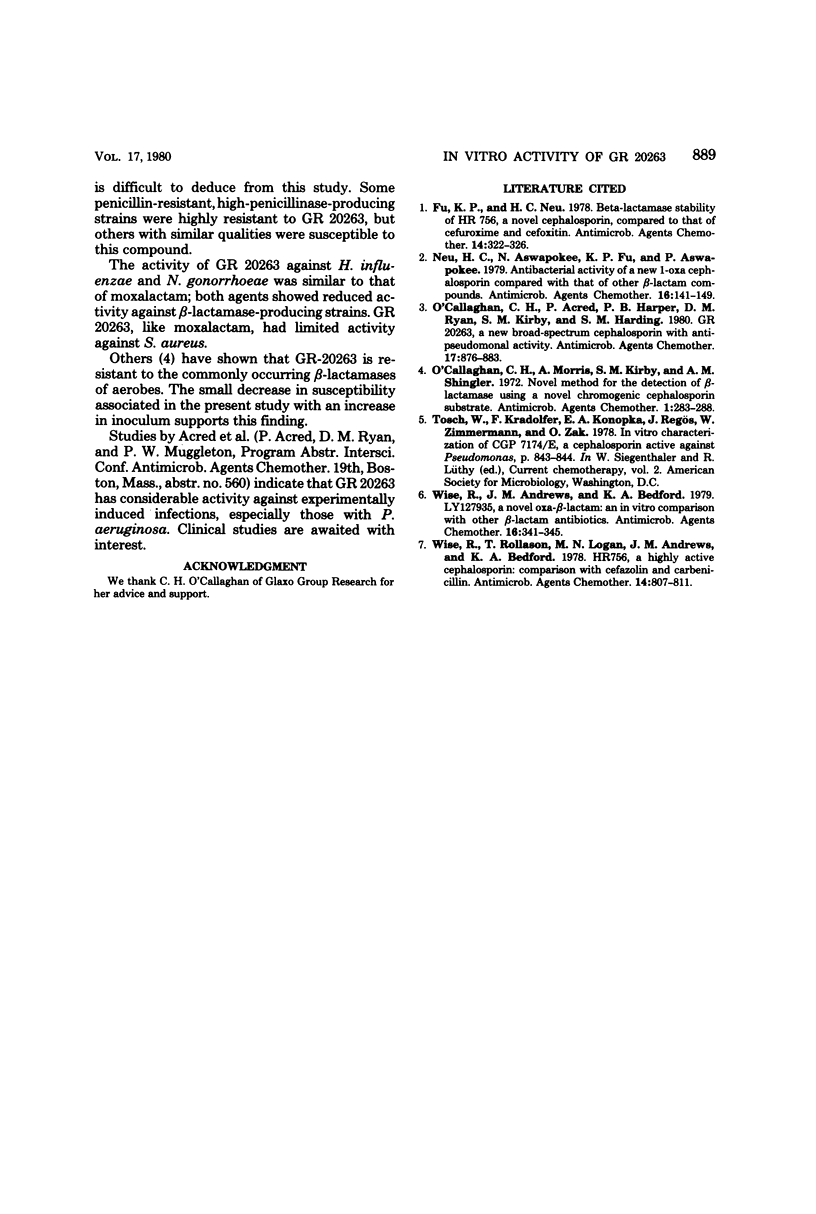Abstract
The in vitro activity of GR 20263, a new cephalosporin, was compared primarily with the activities of moxalactam (LY 127935), cefotaxime, cefoxitin, cefuroxime, and cefazolin against 293 clinical isolates of a variety of gram-positive and -negative bacteria. The minimal inhibitory concentrations of GR 20263 for 90% of group isolates were between 0.06 and 0.5 microgram/ml for the Enterobacteriaceae, Haemophilus influenzae, Neisseria gonorrhoeae, and Lancefield group A beta-hemolytic streptococci; 2 micrograms/ml for Pseudomonas aeruginosa; 16 micrograms/ml for Staphylococcus aureus; and in excess of 128 micrograms/ml for Bacteroides fragilis and Lancefield group D streptococci. In comparison with the other agents, GR 20263 was markedly more active against the Enterobacteriaceae than cefuroxime, cefoxitin, and cefazolin, but marginally less active than moxalactam or cofotaxime. Aganist S. aureus, cefazolin was 16-fold and cefotaxime was 4-fold more active than GR 20263 and moxalactam. GR 20263 was eight-fold more active than cefotaxime and moxalactam against P. aeruginosa.
Full text
PDF





Selected References
These references are in PubMed. This may not be the complete list of references from this article.
- Fu K. P., Neu H. C. beta-lactamase stability of HR 756, a novel cephalosporin, compared to that of cefuroxime and cefoxitin. Antimicrob Agents Chemother. 1978 Sep;14(3):322–326. doi: 10.1128/aac.14.3.322. [DOI] [PMC free article] [PubMed] [Google Scholar]
- Neu H. C., Aswapokee N., Fu K. P., Aswapokee P. Antibacterial activity of a new 1-oxa cephalosporin compared with that of other beta-lactam compounds. Antimicrob Agents Chemother. 1979 Aug;16(2):141–149. doi: 10.1128/aac.16.2.141. [DOI] [PMC free article] [PubMed] [Google Scholar]
- O'Callaghan C. H., Acred P., Harper P. B., Ryan D. M., Kirby S. M., Harding S. M. GR 20263, a new broad-spectrum cephalosporin with anti-pseudomonal activity. Antimicrob Agents Chemother. 1980 May;17(5):876–883. doi: 10.1128/aac.17.5.876. [DOI] [PMC free article] [PubMed] [Google Scholar]
- O'Callaghan C. H., Morris A., Kirby S. M., Shingler A. H. Novel method for detection of beta-lactamases by using a chromogenic cephalosporin substrate. Antimicrob Agents Chemother. 1972 Apr;1(4):283–288. doi: 10.1128/aac.1.4.283. [DOI] [PMC free article] [PubMed] [Google Scholar]
- Wise R., Andrews J. M., Bedford K. A. LY127935, a novel oxa-beta-lactam: an in vitro comparison with other beta-lactam antibiotics. Antimicrob Agents Chemother. 1979 Sep;16(3):341–345. doi: 10.1128/aac.16.3.341. [DOI] [PMC free article] [PubMed] [Google Scholar]
- Wise R., Rollason T., Logan M., Andrews J. M., Bedford K. A. HR 756, a highly active cephalosporin: comparison with cefazolin and carbenicillin. Antimicrob Agents Chemother. 1978 Dec;14(6):807–811. doi: 10.1128/aac.14.6.807. [DOI] [PMC free article] [PubMed] [Google Scholar]


